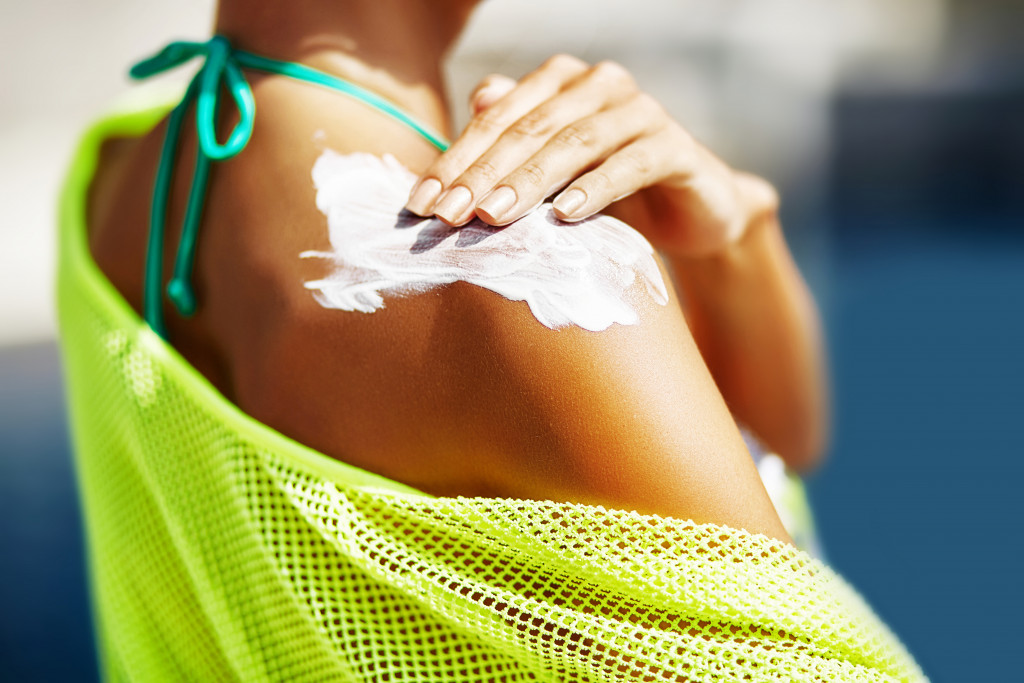- Protect your skin from the sun daily with SPF 30+ sunscreen.
- Hydration is crucial for youthful skin, both inside and out.
- Use gentle yet effective products specifically designed for aging skin.
- Incorporate regular exfoliation into your routine to promote cell turnover.
- Targeted treatments can help address specific areas of concern on aging skin.
As you age, your skin inevitably changes. Fine lines and wrinkles may appear, and the vibrant glow of youth may seem like a distant memory. But this doesn’t mean that flawless skin is out of reach. You can maintain a radiant complexion that defies the years with the right care and strategies. Here are five essential tips for keeping your skin looking its best, no matter the number of candles on your birthday cake.
1. Sun Protection as a Daily Ritual
While warm and inviting, the sun’s rays can take a toll on your skin over time. This shields you from immediate sunburn and helps prevent long-term damage, such as age spots and an increased risk of skin cancer.
Here are some tips for sun protection:
Understanding the Sun’s Rays and their Effects on Skin
To better understand the importance of sun protection, it is essential to know about the different types of ultraviolet (UV) rays emitted by the sun. UVA rays have longer wavelengths and can penetrate deeper into the skin, causing long-term damage such as wrinkles and age spots. On the other hand, UVB rays have shorter wavelengths and are responsible for immediate skin damage like sunburns.
Finding the Right Sunscreen for You
With so many options on the market, it can be overwhelming to choose the right sunscreen. Look for a broad-spectrum sunscreen with an SPF of at least 30 and water-resistant properties. If you have sensitive skin, opt for mineral-based sunscreens that use zinc oxide or titanium dioxide as active ingredients.
Don’t Forget to Reapply

Relying on sunscreen every two hours is essential, even if you’re not in direct sunlight. Many people make the mistake of only applying sunscreen once before heading out for the day, but this is not enough to keep your skin protected. Sunscreen can wear off or be wiped away throughout the day, so it’s crucial to reapply to maintain its effectiveness.
Other Sun Protection Measures
Sunscreen is not the only way to protect your skin from the sun’s harmful rays. Wearing protective clothing, such as long-sleeved shirts and hats, can shield your skin from exposure to direct sun. Seek shade whenever possible, especially during the peak hours of 10 AM to 4 PM when the sun’s rays are strongest.
2. Hydration Inside and Out
Hydration is the cornerstone of youthful skin. On the inside, drinking enough water helps to flush out toxins and keeps your skin cells plump and full, which naturally helps to smooth out fine lines. Aim for at least eight glasses of water daily, and consider incorporating hydrating foods like cucumbers and watermelon into your diet.
On the outside, use a moisturizer that locks in hydration and fortifies your skin’s barrier. Look for products with hyaluronic acid, which can hold many times its weight in water, and don’t be afraid to layer different types of products like serums, oils, and creams for maximum hydration. This helps keep your skin moisturized and maintains resilience against environmental stressors.
3. Gentle Yet Effective Skincare Products
Your skin may become more sensitive and less resilient to harsh products as it matures. It’s essential to use gentle skincare formulations that don’t strip away natural oils or disrupt the skin’s barrier. Opt for sulfate-free cleansers, alcohol-free toners, and products designed for sensitive skin, even if you haven’t identified your skin.
At the same time, effective treatment is necessary to combat the signs of aging. Ingredients like retinoids and peptides can promote skin renewal and collagen production. It’s a balancing act—using products that deliver results without irritating. You might also need to experiment to find what works best for your evolving skin.
4. Regular Exfoliation and Cell Turnover

Exfoliation is beneficial because it removes dead skin cells that can dull your skin and contribute to clogged pores. As you age, your skin’s natural cell turnover slows down, making exfoliation an increasingly important part of your skincare routine. Use a chemical exfoliant like alpha-hydroxy acids (AHAs) or beta-hydroxy acids (BHAs) to clear the surface and promote skin regeneration.
However, it’s crucial not to overdo it. Over-exfoliating can lead to irritation and make your skin more vulnerable to environmental damage. Start with once a week and see how your skin responds, adjusting frequency as needed. Always follow exfoliation with a nourishing moisturizer to soothe the skin and support its repair process.
5. Embrace Targeted Treatments
As the skin matures, certain areas may need more specific care. This is where targeted treatments come into their own. For example, a collagen vibrancy face cream is specially formulated to support the skin’s structure, promoting firmness and reducing the appearance of fine lines. Collagen is a key protein in your skin that decreases with age, so using a cream enriched with this ingredient can help to replenish what time has diminished.
Incorporate such a cream into your nightly routine to work alongside your body’s natural repair cycle. Look for additional ingredients like vitamins C and E that work harmoniously with collagen to protect and revitalize the skin. With regular use, you can help your skin to maintain its elasticity and youthful vibrancy.
Closing Thoughts
Achieving flawless skin as you age is about adapting your skincare practices to meet your skin’s changing needs. Protection from the sun, hydration, gentle yet effective products, regular exfoliation, and targeted treatments form the pillars of a robust skincare routine.
By integrating these strategies into your daily life, you can support your skin’s health and maintain its youthful radiance for years. Remember, it’s never too late to start caring for your skin, and the results will be worth it when you glimpse your glowing complexion in the mirror.

